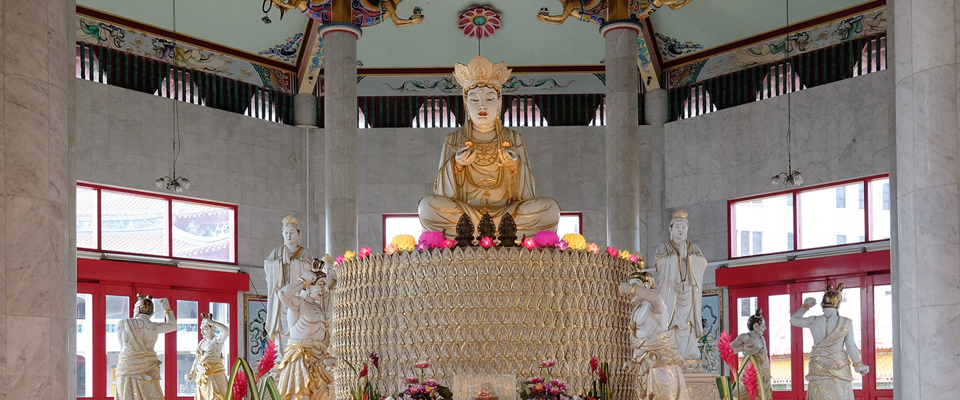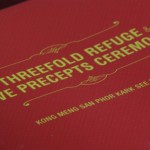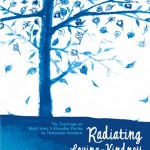Hall of Amrita Precepts

The Hall of Amrita Precepts, completed in 1982, is where Bhikshus (monks) and Bhikshunis (nuns) receive their precepts[1]. As the precepts are like Amrita that satiates one’s hunger and thirst, the hall is thus named the Hall of Amrita Precepts. The diligent observance of precepts helps one to purify one’s bodily and verbal karma, and lays the foundation for the development of a tranquil and peaceful mind. This in turn enables one to cultivate wisdom, which liberates one from Samsara[2].
The Five Precepts are:
- To abstain from killing.
- To abstain from stealing.
- To abstain from sexual misconduct.
- To abstain from false speech.
- To abstain from taking alcohol and intoxicants.
Vairocana Buddha
This hall is fronted by Vairocana Buddha who represents the Dharma Body[3] of Shakyamuni Buddha. His splendid appearance is the result of cultivating boundless merits, virtues and wisdom over an immeasurable amount of time, culminating in enlightenment.
Seated on a giant lotus flower, Vairocana Buddha is surrounded by four great Bodhisattvas namely: Avalokiteshvara Bodhisattva, Manjushri Bodhisattva, Ksitigarbha Bodhisattva and Samantabhadra Bodhisattva, representing Great Compassion, Great Wisdom, Great Vow and Great Practice respectively.
The eight fierce-looking Vajrakumaras guarding each corner of the octagon platform symbolising the Noble Eightfold Path[4], remind us to walk the path with strength and diligence. These Dharma protectors are wrathful towards the defilements entrapping all sentient beings.
On the walls and ceilings are exquisite depictions of heavenly beings offering alms, music and precious items to the Buddha out of respect and devotion.
The Bodhi Tree
Steps away from the Hall of Amrita Precepts is a direct descendant of the sacred Bodhi Tree at Bodhgaya, India, under which Prince Siddhartha (ascetic Gautama) attained Buddhahood. A sapling of this Bodhi Tree was presented to our present Abbot, Venerable Kwang Sheng (then Chief Administrator) by Venerable Weragoda Sarada Maha Thero, Chief Monk of the Singapore Buddhist Meditation Centre on 10 May 1998, a Vesak Full Moon Day. The Bodhi Tree is symbolic of the Buddha’s attainment of unsurpassed Perfect Enlightenment, and serves to remind us of this same potential in each and every one of us, our Buddha Nature.
Footnote:
[1] The Buddha observed that anyone who kills, steals, commits sexual misconduct, lies etc inflicts suffering on others and as such that person consequently experiences pain and suffering in the future. Hence, the Buddha taught those who wish to be free from suffering, to abstain from these actions.
[2] The cycle of wandering in the six realms through repeated and continuous rounds of birth and death.
[3] The Truth body or Dharmakaya is one of the three bodies in Mahayana Buddhism. It constitutes the unmanifested, “inconceivable” (acintya) aspect of a Buddha, out of which Buddhas arise and to which they return after their dissolution. It embodies the very principle of enlightenment and knows no limits or boundaries.
[4] The way to end all suffering. The eight components of this Path are: Right Understanding/View, Right Thought/Intention, Right Speech, Right Action, Right Livelihood, Right Effort, Right Mindfulness and Right Concentration.
You might also be interested in..
您可能感兴趣的…


